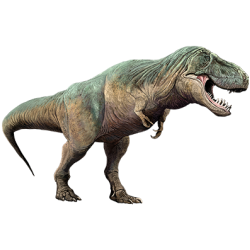Genetics in fiction

Aspects of
have appeared in fiction since the 19th century.Genetics is a young science, having started in 1900 with the rediscovery of Gregor Mendel's study on the inheritance of traits in pea plants. During the 20th century it developed to create new sciences and technologies including molecular biology, DNA sequencing, cloning, and genetic engineering. The ethical implications were brought into focus with the eugenics movement.
Since then, many science fiction novels and films have used aspects of genetics as plot devices, often taking one of two routes: a genetic accident with disastrous consequences; or, the feasibility and desirability of a planned genetic alteration. The treatment of science in these stories has been uneven and often unrealistic. The film Gattaca did attempt to portray science accurately but was criticised by scientists.
Background
Modern genetics began with the work of the monk
Eugenics, the production of better human beings by selective breeding, was named and advocated by Charles Darwin's cousin, the scientist Francis Galton, in 1883. It had both a positive aspect, the breeding of more children with high intelligence and good health; and a negative aspect, aiming to suppress "race degeneration" by preventing supposedly "defective" families with attributes such as profligacy, laziness, immoral behaviour and a tendency to criminality from having children.[3][4]
Genetic engineering, the modification of the genetic material of a live organism, became possible in 1972 when Paul Berg created the first recombinant DNA molecules (artificially assembled genetic material) using viruses.[9]
Genetics themes
Mutants and hybrids
In her 1977 Biological Themes in Modern Science Fiction, Helen Parker identified two major types of story: "genetic accident", the uncontrolled, unexpected and disastrous alteration of a species;
James Blish's 1952 novel Titan's Daughter (in Kendell Foster Crossen's Future Tense collection) featured stimulated polyploidy (giving organisms multiple sets of genetic material, something that can create new species in a single step), based on spontaneous polyploidy in flowering plants, to create humans with more than normal height, strength, and lifespans.[16]
Cloning

Cloning is a recurring theme in science fiction films like Jurassic Park (1993),
Cloning humans from body parts is a common science fiction trope, one of several genetics themes parodied in Woody Allen's 1973 comedy Sleeper, where an attempt is made to clone an assassinated dictator from his disembodied nose.[23]
Genetic engineering
Eugenics

Myth and oversimplification
The geneticist Dan Koboldt observes that while science and technology play major roles in fiction, from fantasy and science fiction to thrillers, the representation of science in both literature and film is often unrealistic.[28] In Koboldt's view, genetics in fiction is frequently oversimplified, and some myths are common and need to be debunked. For example, the Human Genome Project has not (he states) immediately led to a Gattaca world, as the relationship between genotype and phenotype is not straightforward. People do differ genetically, but only very rarely because they are missing a gene that other people have: people have different alleles of the same genes. Eye and hair colour are controlled not by one gene each, but by multiple genes. Mutations do occur, but they are rare: people are 99.99% identical genetically, the 3 million differences between any two people being dwarfed by the hundreds of millions of DNA bases which are identical; nearly all DNA variants are inherited, not acquired afresh by mutation. And, Koboldt writes, believable scientists in fiction should know their knowledge is limited.[29]
See also
References
- ^ Blumberg, Roger B. "Mendel's Paper in English". Archived from the original on 13 January 2016.
- ^ Bateson, William (1907). "The Progress of Genetic Research". In Wilks, W. (ed.). Report of the Third 1906 International Conference on Genetics: Hybridization (the cross-breeding of genera or species), the cross-breeding of varieties, and general plant breeding. Royal Horticultural Society.
- ^ Claude Moore Health Sciences Library (2004). "Origins of Eugenics: From Sir Francis Galton to Virginia's Racial Integrity Act of 1924". University of Virginia. Archived from the original on 28 March 2018. Retrieved 20 July 2018.
- Watson, James D.; Berry, Andrew (2009). DNA: The Secret of Life. Knopf.
- PMID 33226.
- ISBN 978-0-87969-477-7.
- (PDF) from the original on 4 February 2007.
- ISBN 978-1-85996-228-2. Archivedfrom the original on 1 September 2007.
- PMID 4342968.
- .
- ^ a b c Moraga, Roger (November 2009). "Modern Genetics in the World of Fiction". Clarkesworld Magazine (38). Archived from the original on 19 July 2018.
- ^ ISBN 9780835715775.
- ^ ISBN 978-1-78138-332-2.
- ^ Burlingame, Russ (4 October 2014). "The Flash: What are Metahumans?". Comicbook.com. Archived from the original on 17 June 2018. Retrieved 23 July 2016.
- ISBN 978-0-313-35746-6.
- ^ a b c "Genetic Engineering". The Encyclopedia of Science Fiction. 15 May 2017. Retrieved 19 July 2018.
- ISBN 978-0060776091.
- ISBN 9788126910366.
- ISBN 978-1-118-33429-4.
- ISBN 9780415974608.
- ISBN 9781476604541.
- ISBN 978-0199673964.
- ISBN 978-1592592050.
- The Wellcome Trust. Archived from the originalon 18 May 2012. Retrieved 19 July 2018.
- ^ Koboldt, Daniel (29 August 2017). "The Science of Sci-Fi: How Science Fiction Predicted the Future of Genetics". Outer Places. Archived from the original on 19 July 2018. Retrieved 19 July 2018.
- ^ Zimmer, Carl (November 10, 2008). "Now: The Rest of the Genome". The New York Times.
- JSTOR 4240876.
- ^ Koboldt, Daniel (2018). "Putting the Science in Fiction". Archived from the original on 27 August 2018. Retrieved 19 July 2018.
- ^ Koboldt, Daniel (1 August 2014). "Genetics Myths in Fiction Writing". Archived from the original on 19 July 2018. Retrieved 19 July 2018.
